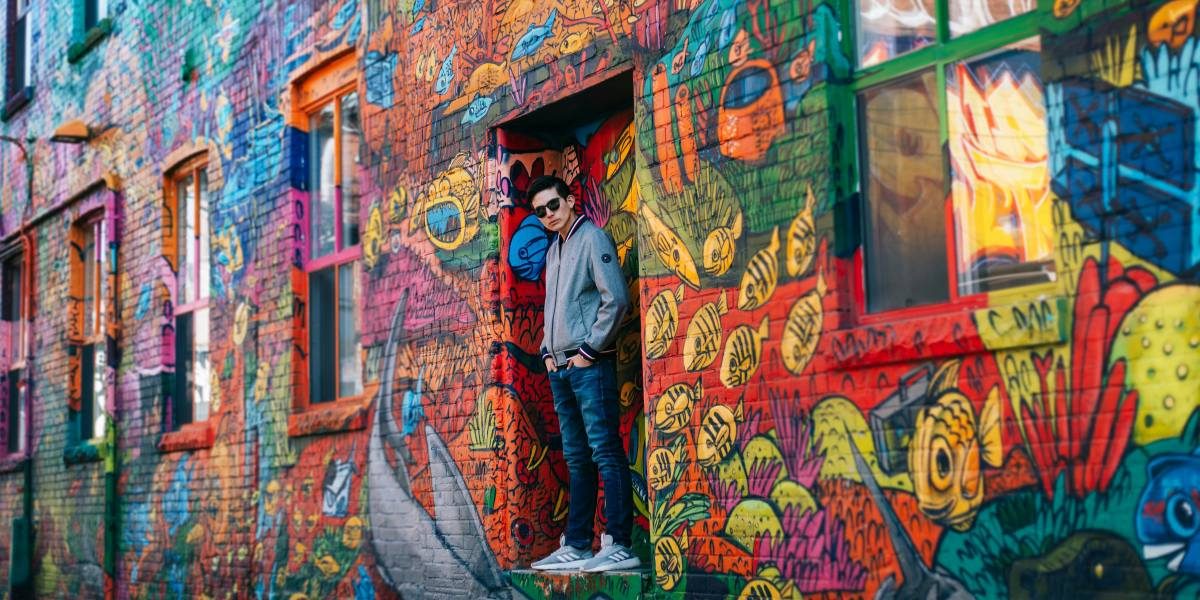Outdoor advertising is undergoing a transformation, and this time, it’s not led by ad agencies or big media companies. It’s coming straight from the streets. Walls that once blended into the background are now being filled with color, meaning, and culture, thanks to the rise of street artists in the world of marketing. These creatives, once seen as outlaws or rebels, are now being embraced by brands looking to connect with people in ways that feel authentic and bold.
Walls Are the New Billboards
Consumers are becoming less receptive to traditional advertising. Pop-ups, banner ads, and repetitive billboards often fade into the noise of everyday life. Street art offers a different approach that cuts through that clutter. A mural on the side of a building doesn’t feel like an ad. It feels like part of the city. And when executed well, it doesn’t just grab attention; it genuinely earns it.
Instead of loudly pushing slogans or flashing logos, this form of expression taps into emotion, identity, and experience. It invites people in, rather than interrupting them. When a brand collaborates with a street artist and gives them creative freedom, the result often resonates with people for a longer time than any sponsored post ever could. If you’re interested in outdoor murals, consider working with an expert like a graffiti artist who can bring your vision to life with meaningful, impactful work.
Murals With a Pulse
These artworks aren’t just visuals; they are voices. Whether they express joy, rebellion, or introspection, they can spark real emotional responses. A well-placed mural can capture someone’s attention. It becomes a conversation piece, a shared experience, and, in some cases, a local landmark.
That emotional weight is one of the reasons why this approach works well in advertising. A mural doesn’t force attention; it earns it by telling a story. It doesn’t directly sell; instead, it creates a moment that resonates with people deeply.
When brands support that kind of message, they’re not just buying wall space; they’re investing in authenticity. And in today’s world, that holds more value than traditional media spend.
From Shadows to Spotlights
Street artists once worked in secrecy, but determination and bold creativity eventually forced the world to take notice. What was once seen as vandalism is now regarded by many as one of the most genuine forms of artistic expression.
Today, many of those once-anonymous names are signing contracts with global campaigns. An outdoor mural artist with a distinctive and thoughtful vision can collaborate with major brands without compromising their artistic identity. The underground culture that once fought to be seen now sets the tone for campaigns that strive to feel genuine.
This evolution didn’t happen overnight. It’s built on years of proving that street art connects in ways polished ads often don’t. The brands that succeed in this space are the ones that listen to the artists, not just dictate the message.
Local Roots, Big Impact
When a mural goes up in a neighborhood, it becomes part of the local story. That’s why some brands don’t just paint; they partner. They collaborate with artists who understand the area. The final result doesn’t just reflect the brand; it reflects the community.
That connection builds trust. A mural that reflects the neighborhood’s voice can turn into a local landmark. People take pride in it, and they begin associating that pride with the brand that supported the work.
Brands that make the effort to engage on a community level gain something more valuable than impressions. They build belonging.
Sharing Without Being Asked
These days, a great mural goes beyond the brick wall it’s painted on. People take photos, share them on Instagram, tag the artist, and spread the image to thousands. What started as a neighborhood project can turn into international content.
That kind of sharing is advertising in its most organic form. Not because someone paid for it, but because people want to share it. It feels genuine, and that authenticity is what cuts through a crowded feed.
Brands that empower artists to create freely are often rewarded with this kind of organic exposure. It’s something traditional ads often fail to replicate.
Campaigns That Hit Hard
Big brands are beginning to realize the potential. Absolut Vodka turned entire walls into expressions of identity and diversity. Netflix blurred the line between ad and experience by painting interactive Stranger Things murals that felt like stepping into the show.
But it’s not just the big players. Smaller businesses are becoming more strategic as well. A local café might showcase a mural that brings in foot traffic. A clothing store could wrap its exterior in street art that doubles as a photo op. These aren’t just decorations; they’re community magnets.
Not Every Wall Wins
This approach carries risks. Street art is bold, and bold doesn’t always mean safe. Some murals might miss the cultural tone or spark backlash. Others might be tagged over or fade into the urban landscape.
That’s why intention matters. Brands that treat street art like a fleeting gimmick are less likely to succeed. The ones that respect the artist, understand the audience, and embrace the unexpected are more likely to create something memorable.
Bigger Stories Are Taking Shape
City walls are no longer blank spaces waiting to be sold. They’re evolving into canvases for storytelling—real storytelling that blends marketing with meaning.
More brands are launching campaigns around local art festivals. More walls are being transformed into powerful visual narratives. And more people are seeing advertising not as a disruption, but as part of the cultural dialogue.
It’s not a trend; it’s a shift. The brands that understand this are positioned well for the future.
Advertising That Speaks Without Shouting
Street artists are redefining the rules. They’re not toning down the message; they’re amplifying it. They’re not following the traditional playbook. They’re creating a new one. And along the way, they’re helping brands show up in the world with purpose.
So if you find yourself stopping in front of a mural that stirs something in you, don’t be surprised if it also sticks with you. That’s the mark of real creative impact. And it just might be the future of advertising.

















